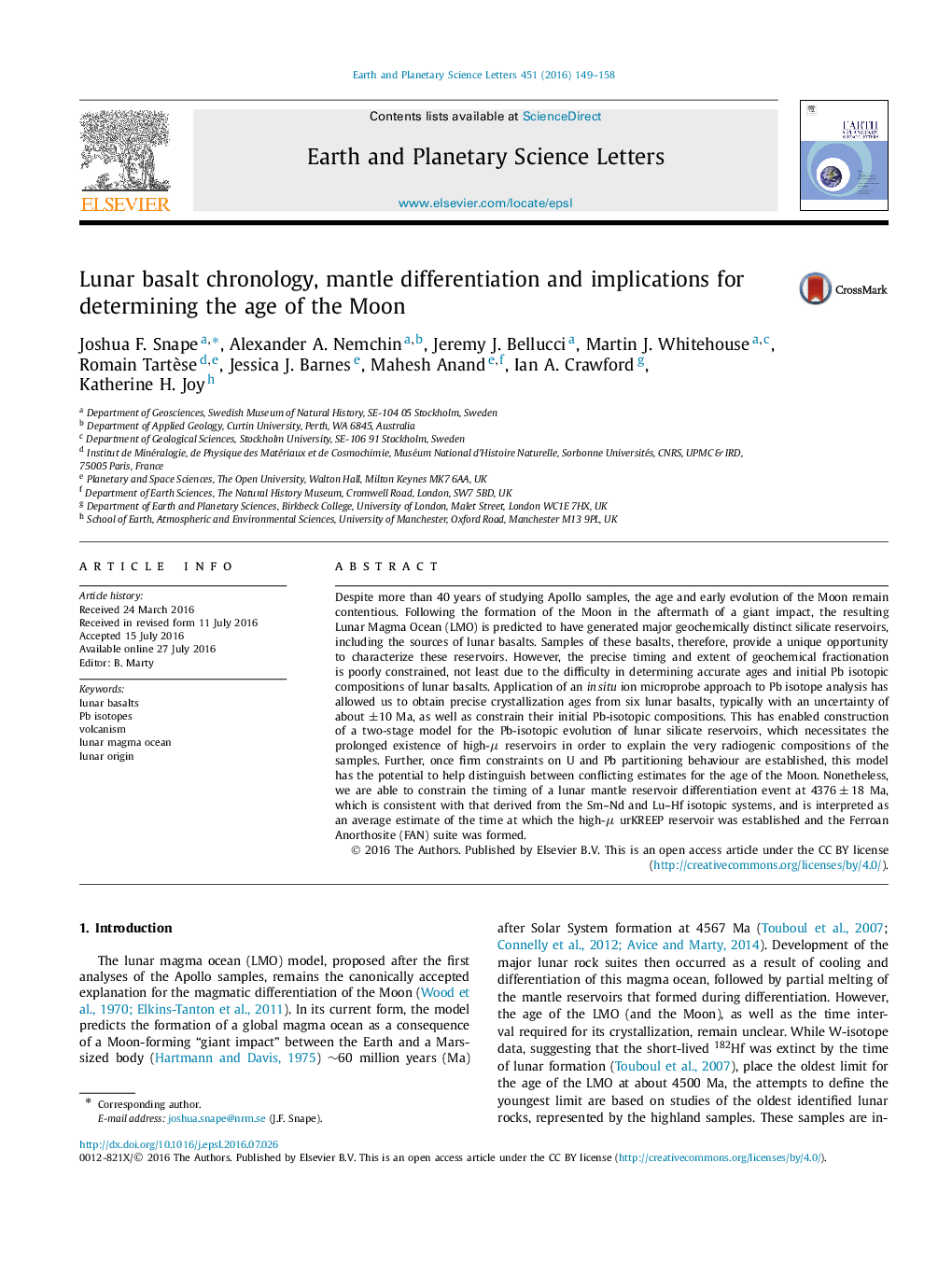| کد مقاله | کد نشریه | سال انتشار | مقاله انگلیسی | نسخه تمام متن |
|---|---|---|---|---|
| 6427259 | 1634705 | 2016 | 10 صفحه PDF | دانلود رایگان |
- In situ measurement of Pb isotope compositions for six lunar basalts
- Precise crystallization ages (typically with errors of ±10Ma) are determined for these basalts.
- The ages and compositions are used to generate a multiple stage Pb growth model.
- This model details the Pb isotope evolution of the Moon.
- The model indicates a major magmatic event occurring on the Moon at 4376±18Ma.
Despite more than 40 years of studying Apollo samples, the age and early evolution of the Moon remain contentious. Following the formation of the Moon in the aftermath of a giant impact, the resulting Lunar Magma Ocean (LMO) is predicted to have generated major geochemically distinct silicate reservoirs, including the sources of lunar basalts. Samples of these basalts, therefore, provide a unique opportunity to characterize these reservoirs. However, the precise timing and extent of geochemical fractionation is poorly constrained, not least due to the difficulty in determining accurate ages and initial Pb isotopic compositions of lunar basalts. Application of an in situ ion microprobe approach to Pb isotope analysis has allowed us to obtain precise crystallization ages from six lunar basalts, typically with an uncertainty of about ±10Ma, as well as constrain their initial Pb-isotopic compositions. This has enabled construction of a two-stage model for the Pb-isotopic evolution of lunar silicate reservoirs, which necessitates the prolonged existence of high-μ reservoirs in order to explain the very radiogenic compositions of the samples. Further, once firm constraints on U and Pb partitioning behaviour are established, this model has the potential to help distinguish between conflicting estimates for the age of the Moon. Nonetheless, we are able to constrain the timing of a lunar mantle reservoir differentiation event at 4376±18Ma, which is consistent with that derived from the Sm-Nd and Lu-Hf isotopic systems, and is interpreted as an average estimate of the time at which the high-μ urKREEP reservoir was established and the Ferroan Anorthosite (FAN) suite was formed.
Journal: Earth and Planetary Science Letters - Volume 451, 1 October 2016, Pages 149-158
